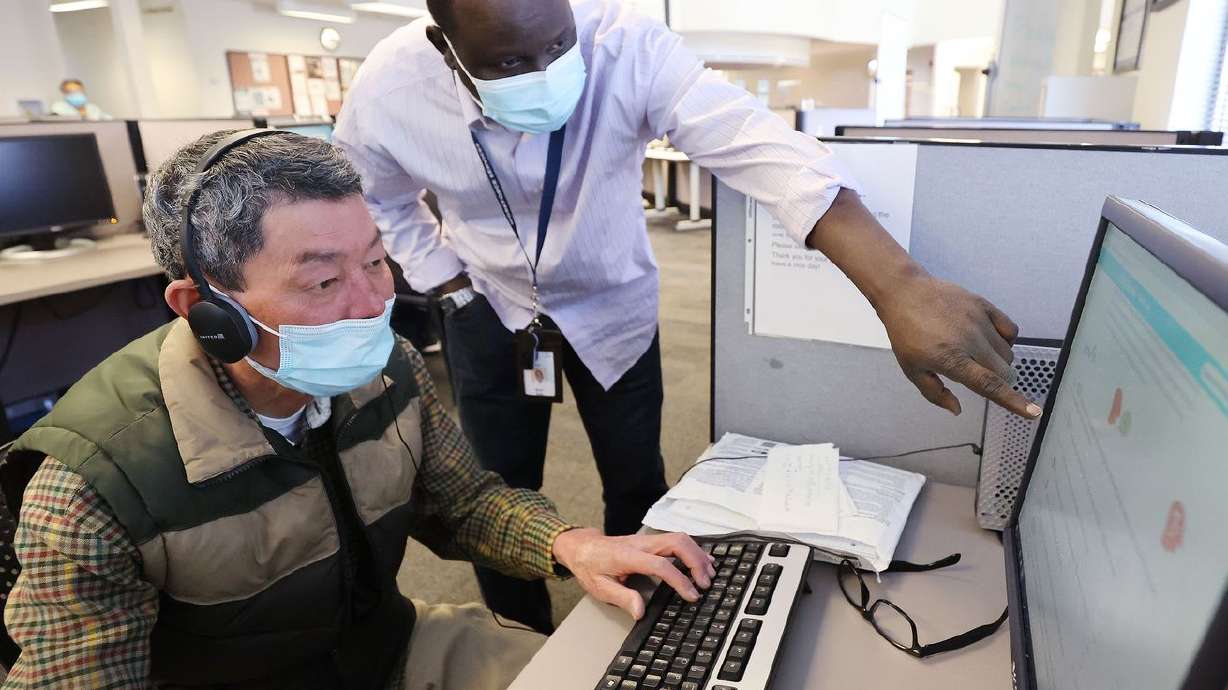Estimated read time: 3-4 minutes
This archived news story is available only for your personal, non-commercial use. Information in the story may be outdated or superseded by additional information. Reading or replaying the story in its archived form does not constitute a republication of the story.
SALT LAKE CITY — The Beehive State continues to boast one of the lowest unemployment rates in the nation.
Utah's Department of Workforce Services reported Friday that February's seasonally adjusted unemployment rate is estimated at 3% — down slightly from 3.1% the previous month, which saw Utah tied with South Dakota among the best in the U.S.
There are approximately 48,774 Utahns considered to be unemployed. Nationally, the U.S. unemployment rate declined a bit to register at 6.2% from 6.3% in January.
The nonfarm payroll employment level in February 2021 was estimated to be virtually the same year-over-year, with 300 fewer jobs since February of last year. The state's current employment level stands at 1,566,900.
"Utah's deliberate and steady pace toward job recovery continues," said DWS chief economist Mark Knold. "February finds Utah's employment count at equality with a year ago. Idaho is the only other state that can make such a claim.
"All other states are still struggling to get their economies pointed in the right direction. Utah's private sector is leading its job rebound. Employment gains would be further along if not for COVID-19's restraining effects upon the education sector."
The latest data showed that private sector employment recorded a 0.7% year-over-year increase. For the period, half of Utah's 10 major private sector industry groups posted net annual job gains, led by trade, transportation and utilities adding 10,900 new jobs, with professional and business services increasing by 8,500 positions, while construction added 5,000 new jobs.
Conversely, five industry groups posted employment declines over the past 12 months. Most notably, leisure and hospitality services lost 13,200 jobs, while education and health care shed 6,100 positions, and information losing 1,400 jobs.
Even though the state's unemployment rate registered at just 3%, the February jobs report showed a very low number of people considered to be out of work. Contrarily, the volume of weekly unemployment claims remains historically high but Knold said the juxtaposition can be explained.
"The short answer is that more people are leaving the labor force than the increase in those who are drawing unemployment claims," he said. "The increase in claimants would raise the unemployment rate. The increase in labor force leavers would lower the unemployment rate."
He noted that the unemployment rate is not calculated on just those who can collect unemployment insurance, but everyone who doesn't have a job and has looked for one within the past six weeks.
"Utah's unemployment rate is falling due to two factors. The rate is coming down from its April COVID-19 peak because many of those people have been put back to work. But not all of them have been re-employed," he said. "These waiting-to-be-reemployed would include those still collecting unemployment insurance, hence why the claims counts are still elevated."
Another factor is that people are leaving the labor force and they are no longer looking for a job, he added.
"This additional factor is why the unemployment rate has fallen to a low level. This level may look like full employment, but that is currently not the case," Knold said. "That rate instead reflects exiting workers. One has to be looking for a job within the past six weeks to be counted as unemployed."
Since COVID-19 hit in April 2020, a yearly class of students has graduated and entered the labor force, he said.
"They always increase Utah's labor force size every year. Without adequate job growth to absorb them, the economy will build up an excess of unemployed workers," Knold said. "When those workers sit around for too long and do not find a job, some will stop looking and in the process drop out of the labor force. In effect, they drop out of the unemployment count."










